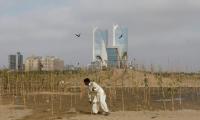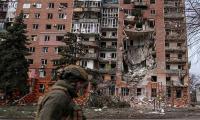As per the latest report released by the United Nations Office on Drugs and Narcotics in November, poppy and opium production in Afghanistan has increased by a record high 63% in 2017. The report finds political instability, lack of government control and insecurity, as well as corruption as main drivers of illegal cultivation. In the last year of Taliban governance, the production was reduced to merely 221 tons, which has now reached 9,000 tons in 2017; an increase of 87% from its 2016 level i.e. 4,800 tons.
The key findings of the report reveal the total area under opium poppy cultivation in Afghanistan was estimated at 328,000 hectares in 2017, a 63% increase or 127,000 hectares more compared to the previous year. This level of opium poppy cultivation is a new record high and exceeds the formerly highest value recorded in 2014 (224,000 hectares) by 104,000 hectares or 46%.
Strong increases were observed in almost all major poppy cultivating provinces. In Helmand province alone, cultivation increased by 63,700 hectares (+79%) which accounted for about half of the total national increase. Strong increases were observed also in Balkh (+10,000 hectares or almost five times more than in 2016), Kandahar (+7,500 hectares or +37%), Nimroz (+6,200 hectares or +116%), and Uruzgan (+6,000 hectares or +39%).
The majority (60%) of cultivation took place in the south of the country. The Western region accounted for 17% of total cultivation, the northern region for 13% and the eastern region for 7%. The remaining regions (north-eastern and central) together accounted for 3%. Helmand remained the country’s major opium poppy cultivating province, followed by Kandahar, Badghis, Faryab, Uruzgan, Nangarhar, Farah, Balkh, Nimroz and Badakhshan. Opium poppy cultivation expanded to new regions and intensified where there was cultivation before.
In 2017, the number of poppy-free provinces in Afghanistan decreased from 13 to 10. The number of provinces affected by opium poppy cultivation increased from 21 to 24. Ghazni, Samangan and Nuristan provinces lost their poppy-free status. Ghazni had been poppy-free for more than two decades (since 1995), Samangan and Nuristan for almost 10 years (since 2007).
The US blames Taliban for sponsoring the poppy crop. However, the latest UN report contradicts the allegation. As per the report, poppy cultivation has expanded to northern Afghan areas of Balkh, Jowzjan, Baghlan, and Sari Pul provinces. These provinces were entirely free of poppy a few years ago and are known to be out of Taliban control.
Financing the black and clandestine operations through secret means requires huge funds. Apart from the known official funding, organizations like the CIA and Blackwater, etc, do adopt hidden sources of income as well. War-torn countries like Afghanistan provide ideal environment for such illegal activities.
US soldiers and contractors do not require visa restrictions for Afghanistan, nor do the laws of the land apply to them. Hence nothing stops them from violating Afghan state laws as well as from supporting and sponsoring illegal money generation activities like poppy production and drug patronage.
Also, a high numbers of Afghan defence forces personnel are also habitual poppy users and hence have low morale and poor physical health. This all happens in Afghanistan under the very watchful eyes of the elite superpower of the world. One can only wish that the US feels for the victims of their game plan on poppy. The US should have sympathies for her own people as well as for the people around the world. Along with domestic control of the menace, the US should also take practical steps to control the menace in Afghanistan.







